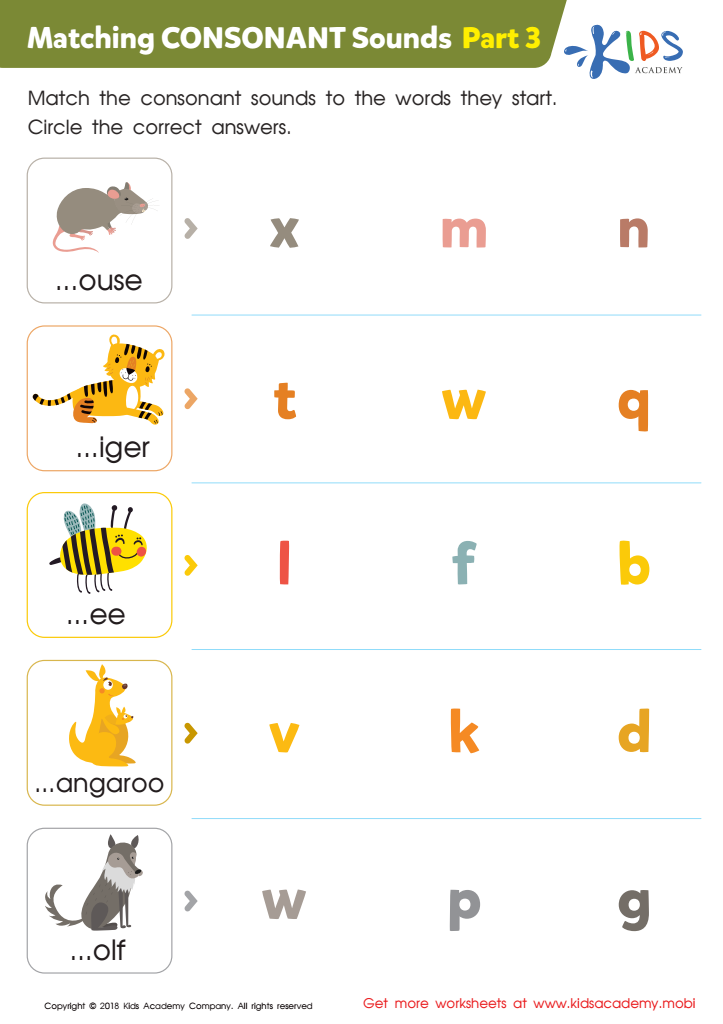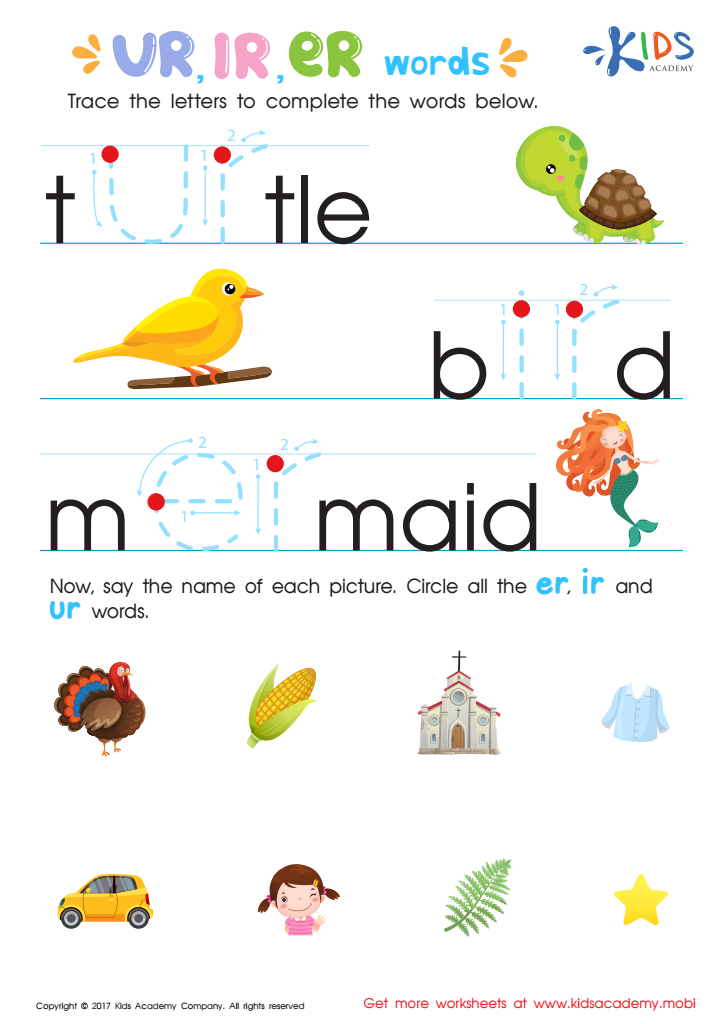Phonics recognition Normal Worksheets for Ages 5-9
16 filtered results
-
From - To
Discover our Phonics Recognition Worksheets, specially designed for children aged 5-9! These engaging resources aim to enhance your child's reading skills by helping them identify letter sounds and connect them to words. Each worksheet is crafted with bright colors and fun illustrations to capture young learners' attention while promoting letter recognition and sound decoding. Ideal for both classroom environments and home learning, our materials offer a variety of activities that cater to different learning styles. Boost your child's confidence and competence in phonics with these effective worksheets that make learning enjoyable and interactive! Explore the joy of reading today!


Letter K Sounds Worksheet


Letter Sounds: J Printable Worksheet


Sight Words with Blends Worksheet


Where Is the Digraph? Worksheet


Listen to the Sounds Worksheet


Phonics and Word Recognition: Assessment 1 Worksheet


Matching Consonant Sounds: Part 3 Worksheet


Let's Count the Sounds Worksheet


Matching Consonant Sounds: Part 2 Worksheet


Reading: Long I and Short I Sound Maze Worksheet


Let's Check for «i» Sounds Worksheet


Sounds Are Everywhere! Worksheet


Phonics and Word Recognition: Assessment 2 Worksheet


Phonics and Word Recognition: Assessment 1 ELA Worksheet


IR UR ER Words Worksheet


Match–Up Game: Beginning Sounds Worksheet
Phonics recognition is a crucial skill for children ages 5 to 9 as it lays the foundation for reading and writing. During these formative years, children learn to connect sounds with letters, enabling them to decode words independently. This ability is essential for developing reading fluency, comprehension, and overall literacy.
Parents and teachers should prioritize phonics recognition because it can significantly impact a child's academic success. A strong grasp of phonics helps children tackle unfamiliar words, promotes confidence in reading, and encourages a lifelong love of literature. Furthermore, early phonics instruction can help prevent reading difficulties later on; children equipped with phonics skills are less likely to struggle with comprehension and vocabulary.
Additionally, phonics recognition plays a vital role in building a child's cognitive skills. It enhances auditory processing, memory, and critical thinking. Also, engaging parents and teachers in phonics instruction fosters a collaborative learning environment, reinforcing the importance of education at home and school. By adhering to phonics recognition norms, caregivers can ensure children receive the foundational skills necessary for effective communication, academic growth, and future success. Investing in phonics is, therefore, an investment in a child’s educational journey and overall development.
 Assign to My Students
Assign to My Students




















